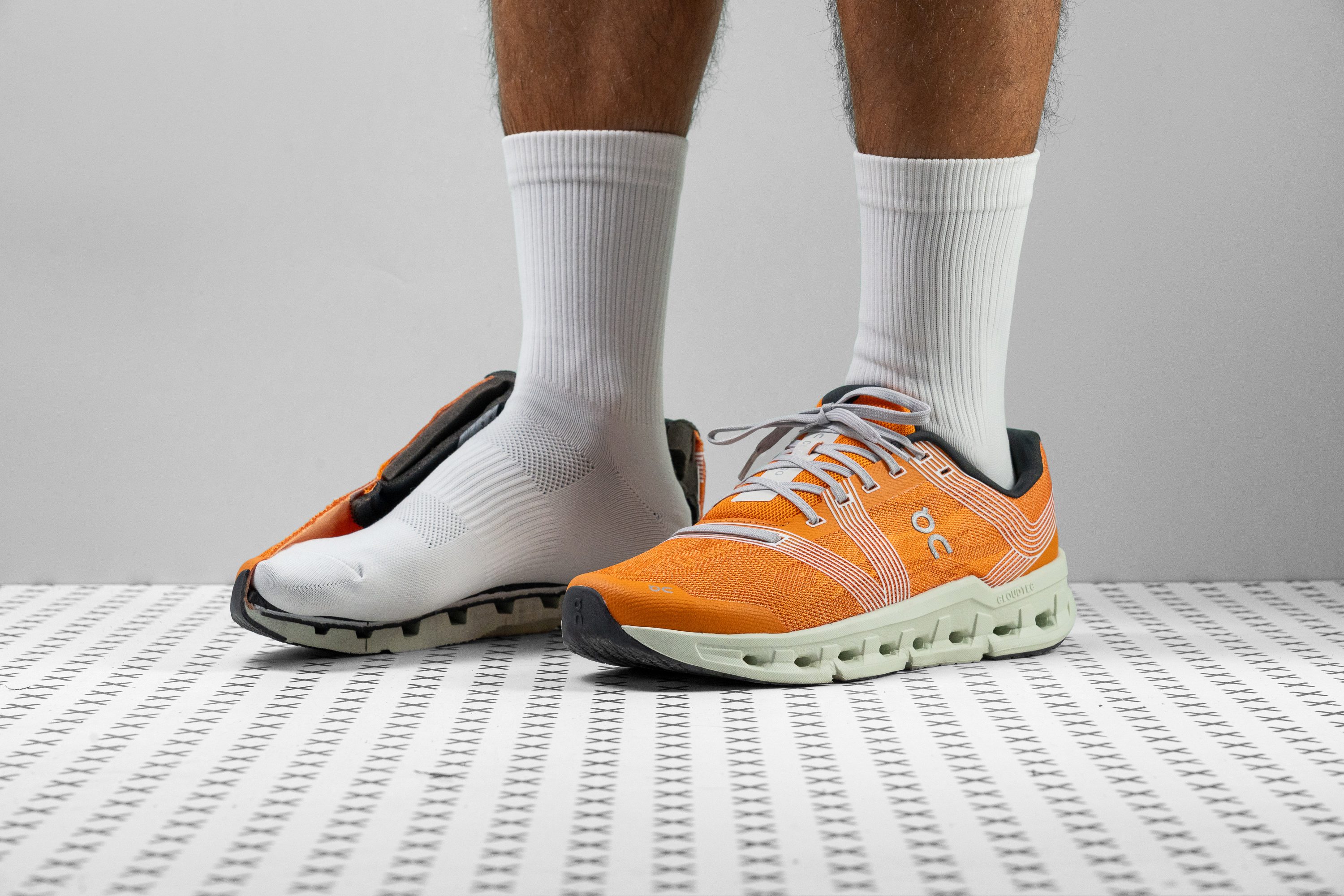Our verdict
- Top pick in best On running shoes (2023)
- Top pick in best On road running shoes (2023)
Pros
- Fun at high speeds
- Smooth ride
- Pleasantly lightweight
- Good stability
- Plush padding
- Accommodating toebox
- Excellent lockdown
- Grippy outsole
- Comfortable for walking
- Sustainable and stylish design
Cons
- Too firm for longer runs
- Average at best breathability
- Upper durability could be better
Audience verdict
- Top 21% in sustainable running shoes
Comparison
The most similar running shoes compared
+ + Add a shoe | |||||
|---|---|---|---|---|---|
| Audience score | 89 Great! | 79 Good! | 76 Decent! | 86 Good! | |
| Price | £140 | £60 | £100 | £150 | |
| Pace | Daily runningTempo | Daily running | Daily running | Daily running | |
| Shock absorption | - | - | Moderate | - | |
| Energy return | - | - | Low | - | |
| Traction | - | - | Moderate | - | |
| Arch support | Neutral | Neutral | Neutral | Neutral | |
| Weight lab Weight brand | 9.1 oz / 259g 7.5 oz / 214g | 9.3 oz / 264g 10 oz / 283g | 9.1 oz / 257g 9 oz / 255g | 9.5 oz / 269g 9.9 oz / 282g | |
| Drop lab Drop brand | 11.2 mm 11.0 mm | 9.6 mm 8.0 mm | 11.9 mm 12.0 mm | 8.6 mm 8.0 mm | |
| Strike pattern | Heel | HeelMid/forefoot | Heel | HeelMid/forefoot | |
| Size | Slightly small | Slightly small | True to size | Slightly small | |
| Midsole softness | Balanced | Balanced | Balanced | Firm | |
| Difference in midsole softness in cold | Small | Normal | Small | Small | |
| Toebox durability | Bad | Decent | Bad | Decent | |
| Heel padding durability | Bad | Bad | Good | Bad | |
| Outsole durability | Good | Decent | Good | Decent | |
| Breathability | Moderate | Moderate | Moderate | Moderate | |
| Width / fit | Medium | Medium | Medium | Medium | |
| Toebox width | Medium | Wide | Medium | Medium | |
| Stiffness | Moderate | Moderate | Moderate | Stiff | |
| Torsional rigidity | Moderate | Moderate | Moderate | Stiff | |
| Heel counter stiffness | Flexible | Moderate | Stiff | Flexible | |
| Heel lab Heel brand | 33.8 mm 30.0 mm | 30.8 mm 30.0 mm | 34.1 mm 34.0 mm | 34.6 mm 34.0 mm | |
| Forefoot lab Forefoot brand | 22.6 mm 19.0 mm | 21.2 mm 22.0 mm | 22.2 mm 22.0 mm | 26.0 mm 26.0 mm | |
| Widths available | NormalWide | NormalX-Wide | NormalWide | Normal | |
| Orthotic friendly | ✓ | ✓ | ✓ | ✓ | |
| Season | All seasons | All seasons | All seasons | All seasons | |
| Removable insole | ✓ | ✓ | ✓ | ✓ | |
| Ranking | #115 Top 31% | #326 Bottom 13% | #348 Bottom 7% | #174 Top 47% | |
| Popularity | #236 Bottom 37% | #286 Bottom 23% | #142 Top 38% | #340 Bottom 9% |
Who should buy
We recommend the Cloudgo as a good choice for:
- Casual and/or advanced runners who prioritise comfort in their daily trainers
- Runners who want a speedy shoe that isn’t stiff
- Runners who need a neutral/stable shoe that offsets pronating strides.
- Those looking for a road shoe that’s comfy and stylish enough for walking around town
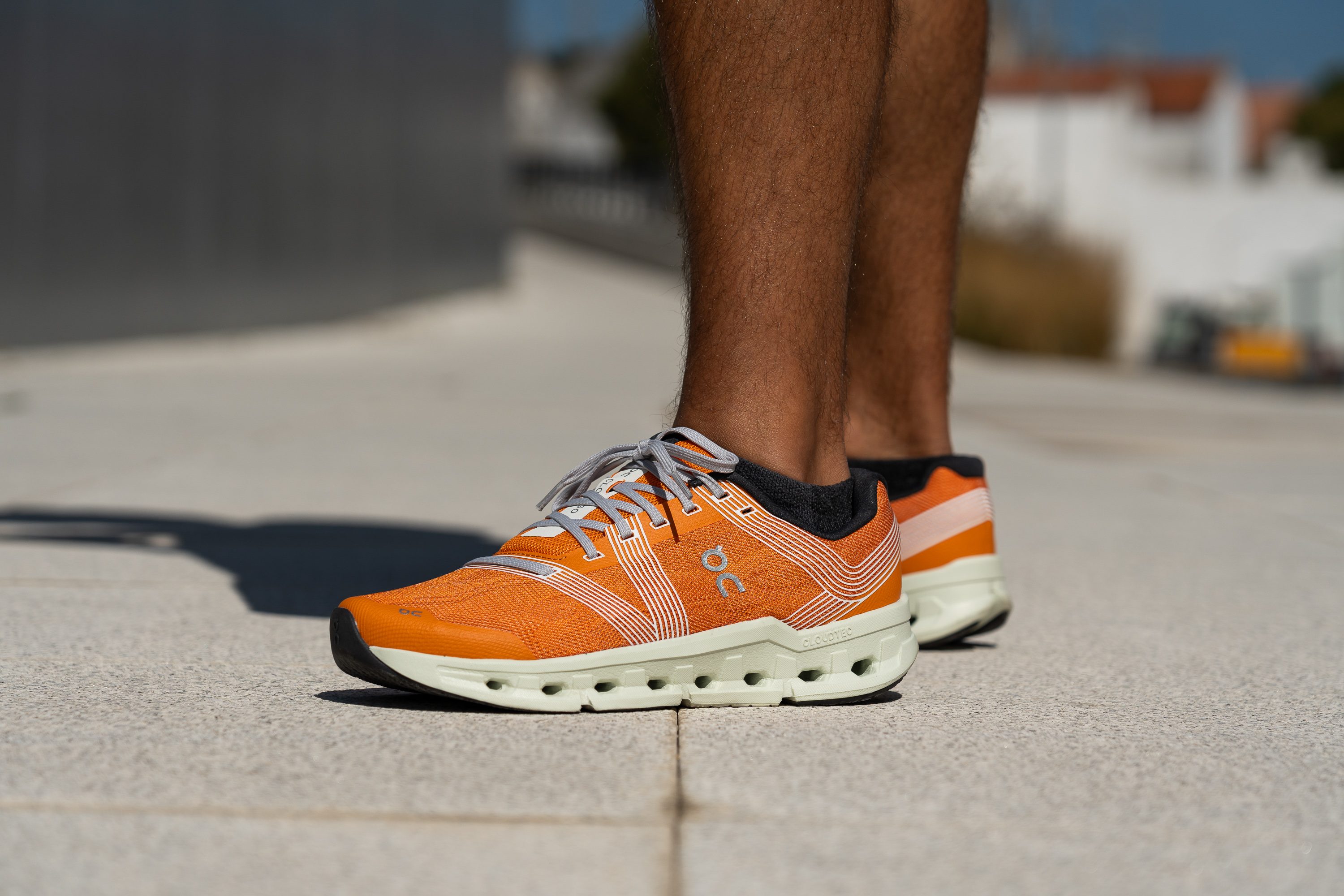
Who should NOT buy
The Cloudgo’s midsole is too firm to comfortably facilitate long-distance efforts. Instead, we recommend the On Cloudmonster which provides more impact protection for longer runs.
The Cloudgo is quite a toasty ride, so for runners in hot climates or prone to sweaty feet, we suggest looking at the more breathable Saucony Triumph 20 instead.
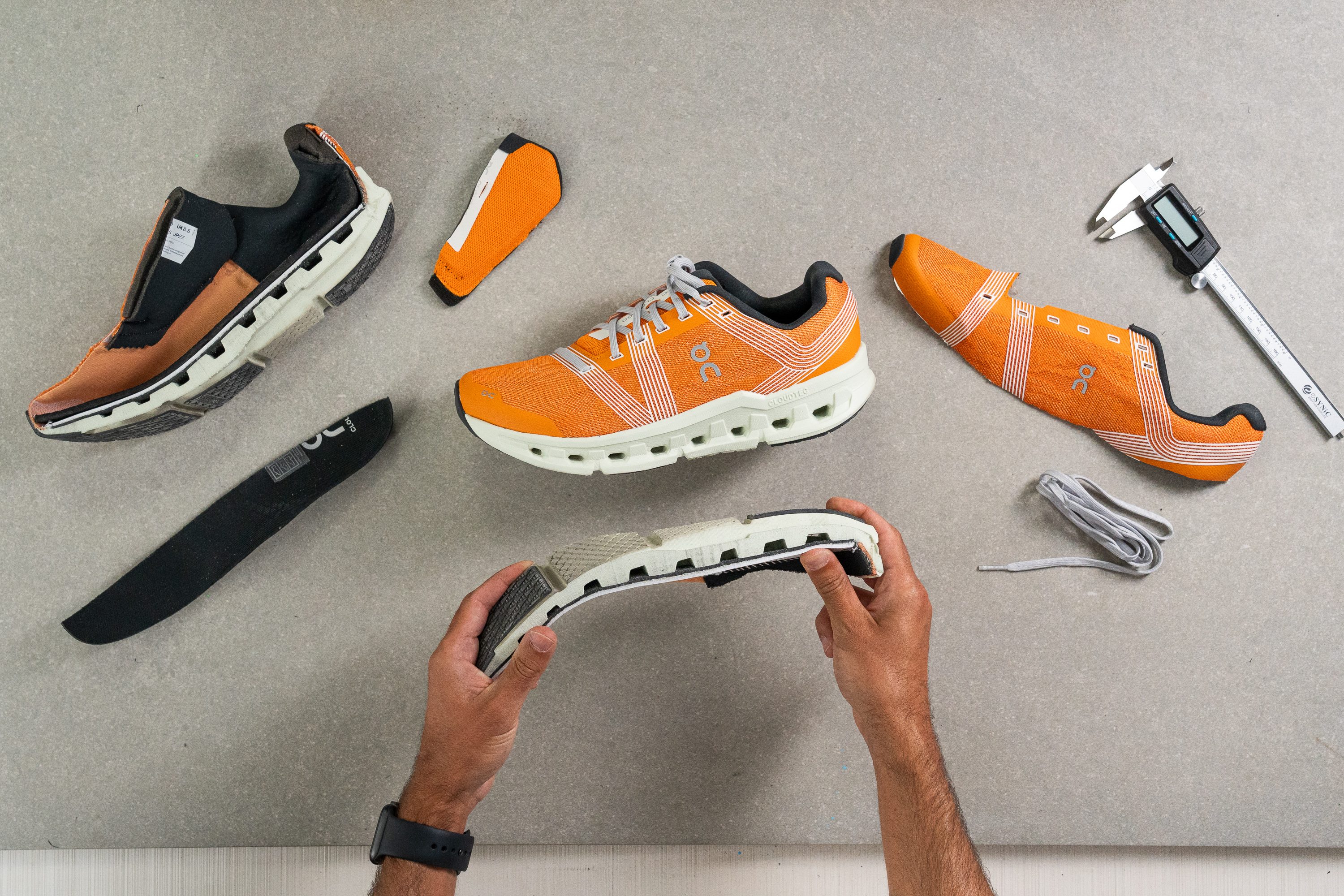
Cushioning
Heel stack
While officially stated by ON as 30 mm; we measured the Cloudgo’s stack to be 33.8 mm at the heel. Our accurate measurement makes the Cloudgo’s heel stack right around the average of shoes we’ve measured in the lab so far, and means that heel strikers have plenty of foam underfoot to savour the midsole cushioning.

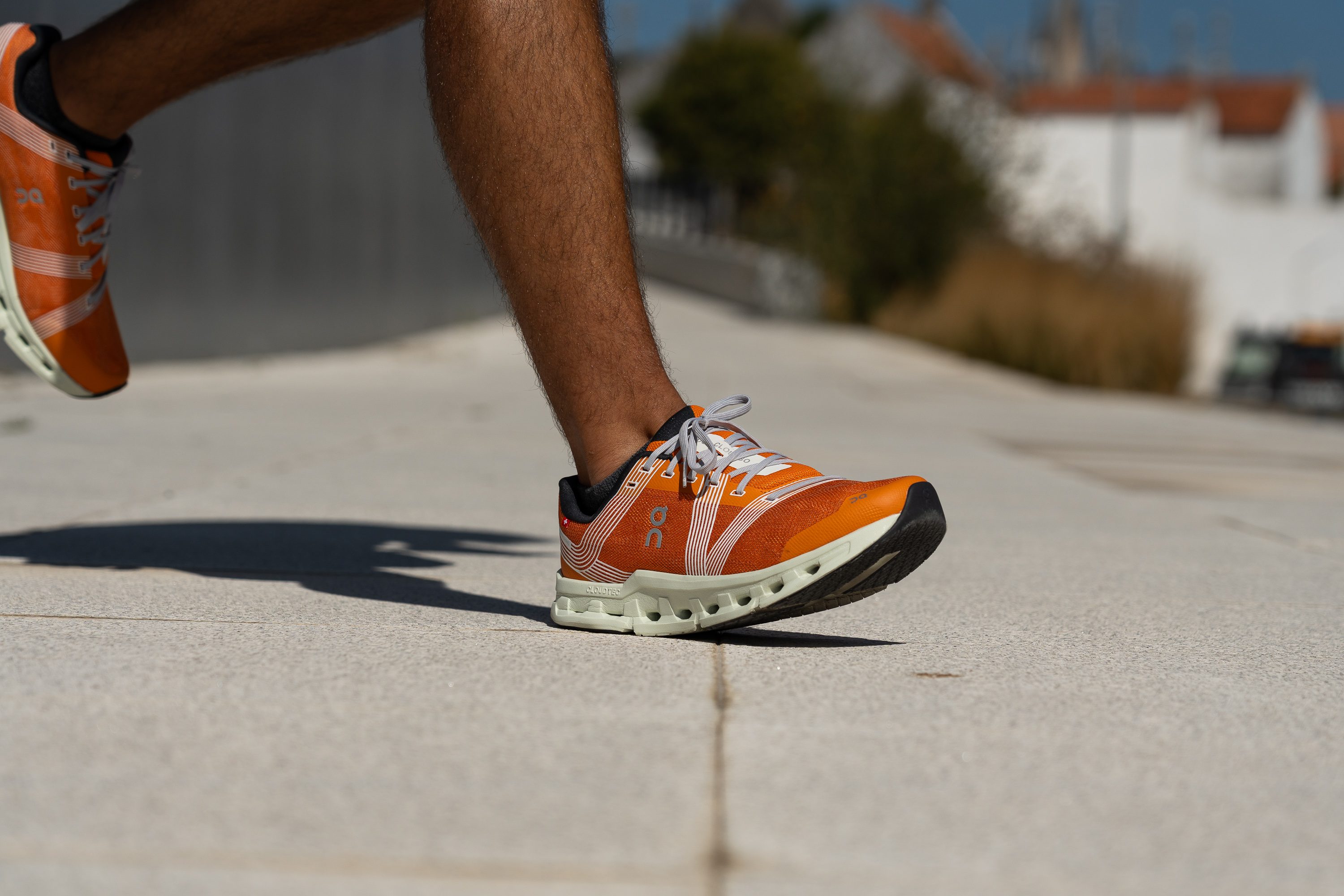
| Cloudgo | 33.8 mm |
| Average | 34.8 mm |
Forefoot stack
We found a similar discrepancy with the 19 mm forefoot stack stated by On. Using our caliper, we found the Cloudgo’s stack to actually measure 22.5 mm at the forefoot. This is slightly shorter than our current lab average, but still more than enough foam to provide adequate impact protection over most distances.

| Cloudgo | 22.6 mm |
| Average | 26.2 mm |
Drop
The difference in our correct stack measurements leaves us with a drop height of 11.3 mm, which makes the 11 mm stated pretty accurate despite their inaccurate figures. This classifies the Cloudgo as a high drop shoe; making it better suited for heel striking runners, as well as those with lower leg injuries as this drop height allows our knees and hips to bear more of the load as opposed to our calves and ankles.
For a comprehensive look at the effects and benefits of different drop heights, check out our useful guide on the subject.

| Cloudgo | 11.2 mm |
| Average | 8.6 mm |
Midsole softness
We pressed our durometer against the Cloudgo’s midsole foam and got a reading of 28.1 HA. Despite this being quite a bit firmer than the average shoe, the shoe is far from brick-like underfoot as the midsole is quite lively and cushioned enough to suit the needs of most of our daily runs. We say “most” as we did find the Cloudgo’s midsole to be lacking during our longer test runs.
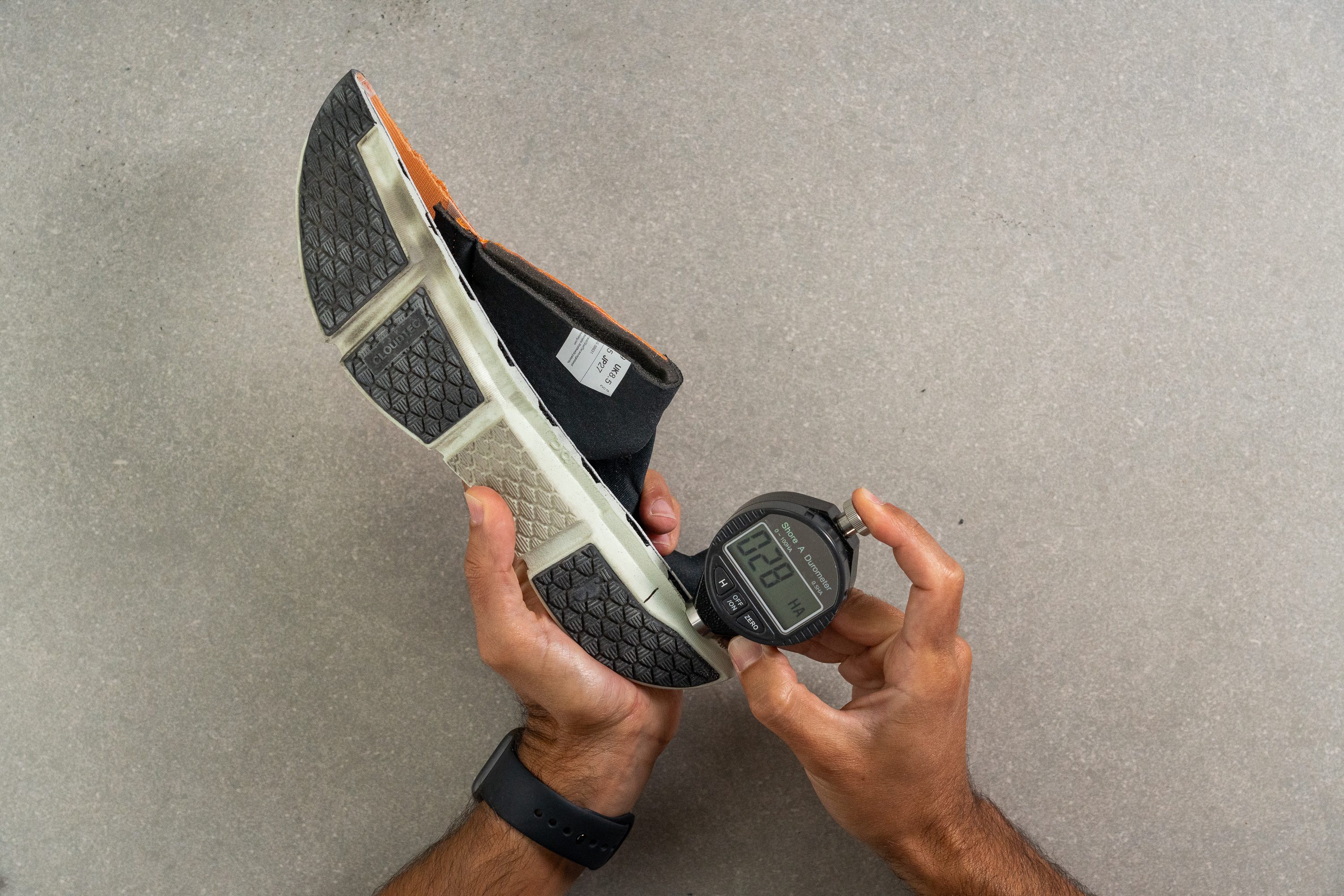
While the Cloudgo is too firm to be described as cloud-like, the shoe sure can go. The pronounced rocker geometry and reactive midsole allows us to seamlessly switch gears for speedier runs, making the Cloudgo a fun shoe at any pace. On the other hand, for runners looking for a shoe that’s speedy as well as plush; we suggest having a look at the Cloudsurfer 7.
| Cloudgo | 28.1 HA |
| Average | 20.4 HA |
Size and fit
Size
On Cloudgo fits slightly small (198 votes).
Width / Fit
Using our calliper, we measured the Cloudgo’s width to be 94.0 mm.
This is slightly narrower than average and means that while the shoe should accommodate most foot shapes, runners with very wide feet will feel constricted. For those runners, we recommend checking out the On Cloud X instead.
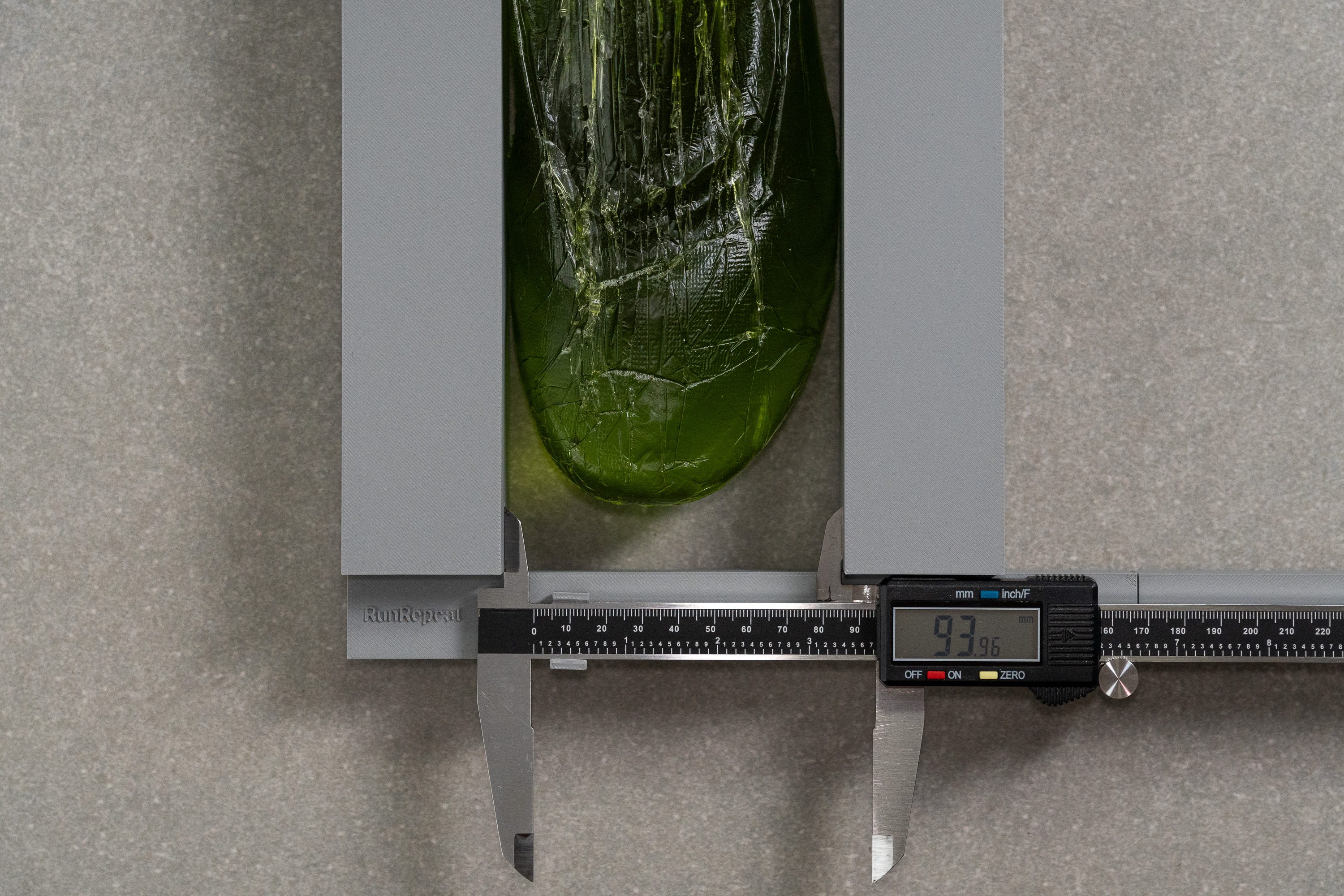
| Cloudgo | 94.0 mm |
| Average | 95.1 mm |
Toebox width
Moving up to the area around the big toe, we measured the Cloudgo’s toebox to be 74.0 mm wide. This is around the same as the average shoe and should pose no problems for most runners.
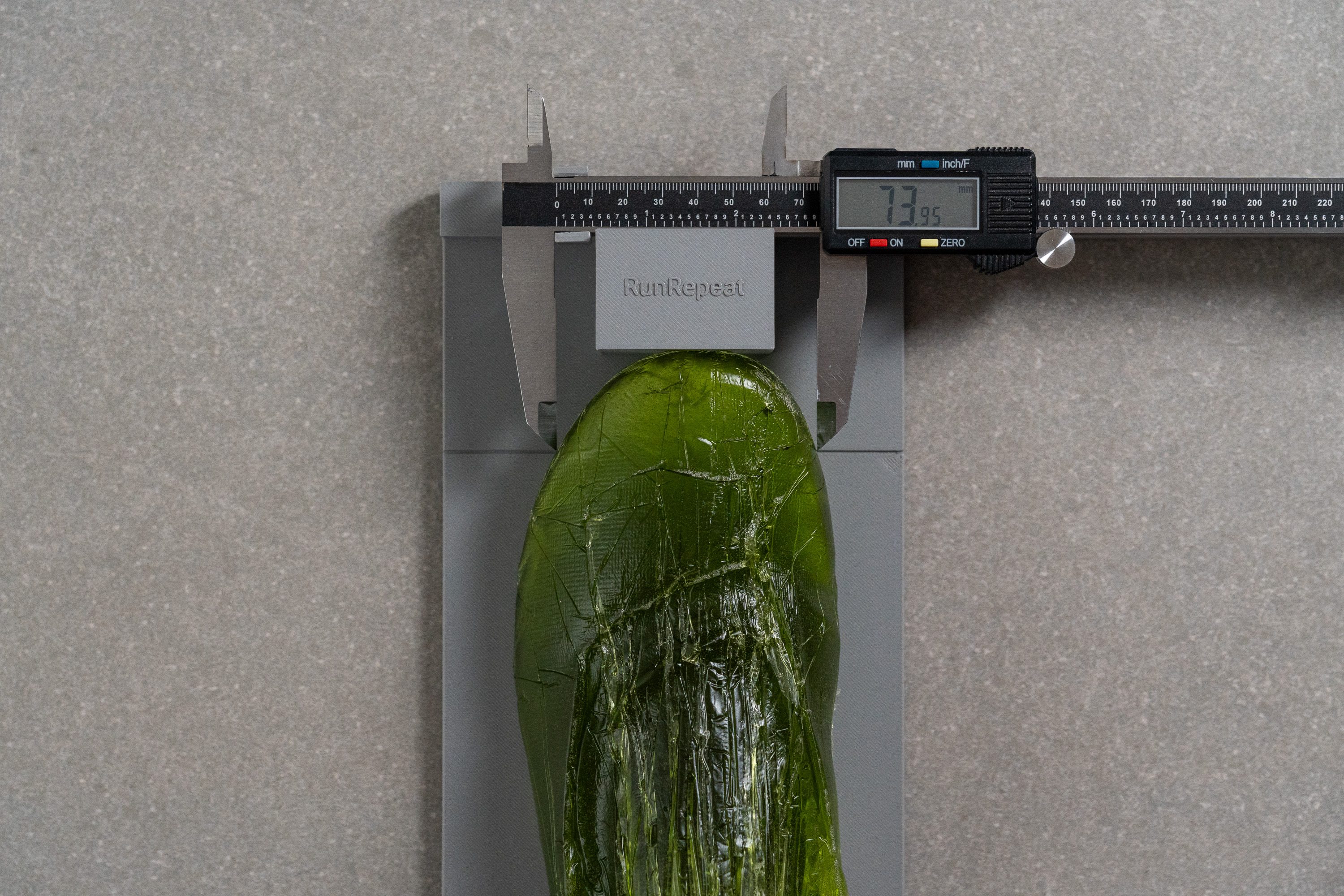
| Cloudgo | 74.0 mm |
| Average | 73.2 mm |
Toebox height
Those sensitive to low-sitting toeboxes might find the Cloudgo less appealing. With only 25.5 mm of vertical clearance, we expected a bit more room to accommodate upward toe movement comfortably.
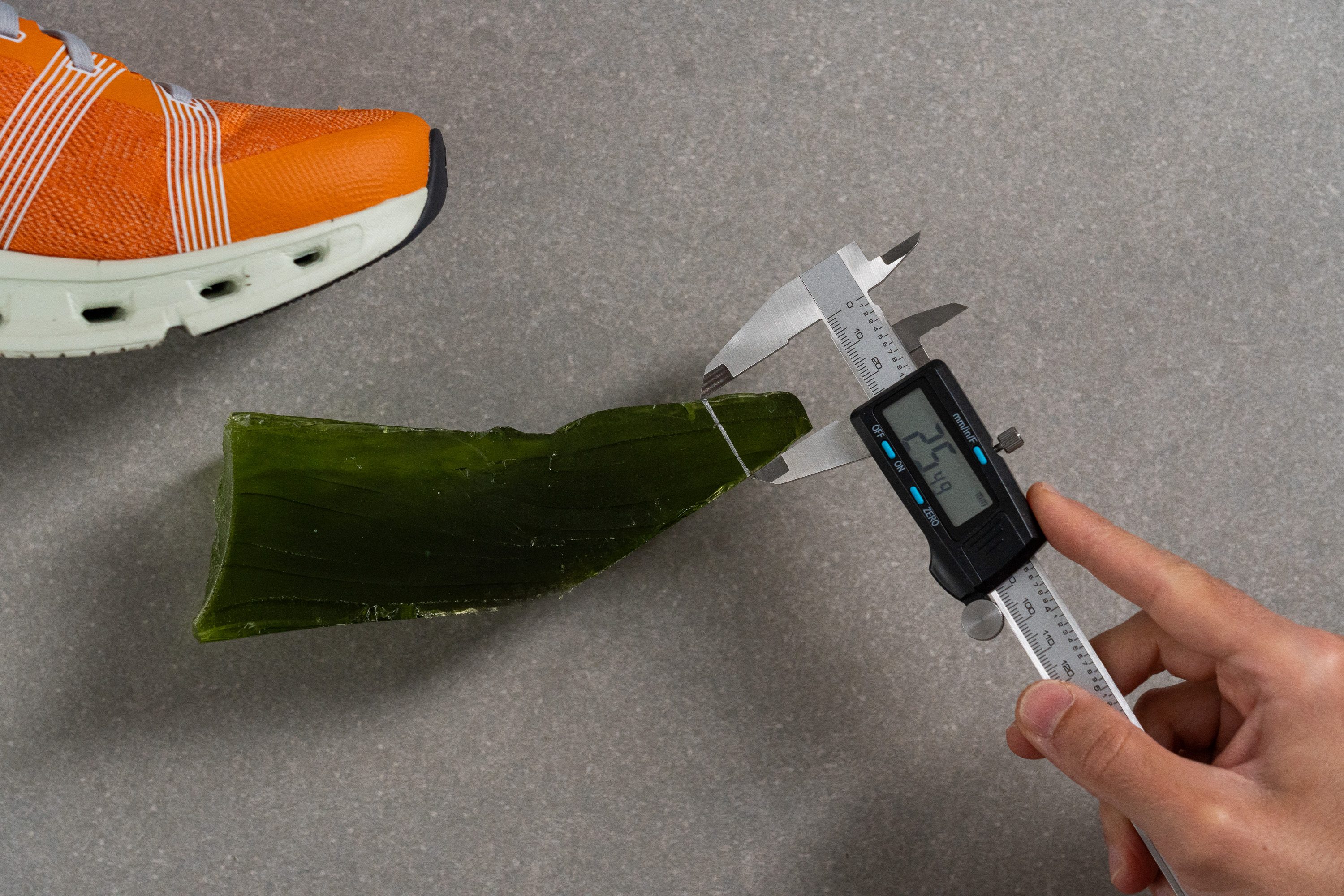
| Cloudgo | 25.5 mm |
| Average | 27.1 mm |
Flexibility / Stiffness
With only 14N of force required to bend the shoe 90-degrees, the Cloudgo is a remarkable flexible shoe! This level of flexibility means that the shoe easily bends with the natural movement of the foot, which in turn greatly contributes to the Cloudgo’s comfy and easy ride.
This test follows an older methodology, which is why you don't see recently tested shoes in the chart. Results from different methodologies can not be compared.
| Cloudgo | 14.0N |
| Average | 28.1N |
Stiffness in cold (%)
We repeated the stiffness test after leaving the Cloudgo in the freezer for twenty minutes and got a reading of 21.5N. This is still an incredibly flexible reading that not only rivals the average shoe under similar conditions, but is more flexible than about 80% of shoes we've tested at room temperature. So while the midsole might feel like running on an ice cube in the winter, the shoe will remain pliable and easy despite harsh and frigid conditions.
With a 53.2% change in the shoe’s flexibility depending on the weather, the Cloudgo’s isn’t as consistent as the average shoe which stiffens up to a lesser extent. However, as mentioned in the previous section, the shoe still performs extremely well compared to the average shoe.
| Cloudgo | 53% |
| Average | 33% |
Weight
Which brings us to the weigh-in. While On markets the shoe as a feathery 214g, we found that the Cloudgo tips the scale at a more substantial 9.15 Oz (259g). This is still slightly lighter than the average shoe, making the Cloudgo surprisingly lightweight underfoot for a shoe that boasts such generous padding and a healthy stack height.

| Cloudgo | 9.1 oz (259g) |
| Average | 9.3 oz (264g) |
Breathability
As our smoke test demonstrates, the Cloudgo’s breathability is less than impressive. While the smoke is able to escape pretty evenly throughout the upper, it vents slowly and in thin wisps which implies that a fair amount of heat remains trapped in the shoe. This performance earns the Cloudgo a breathability score of 3 out of 5.
For a shoe that scores a perfect 5 out of 5 for breathability, check out how the Saucony Triumph 20 performed in the same smoke test.
Inspecting a backlit cross-section of the upper explains the shoe’s lacklustre breathability. Very little light shines through the Cloudgo’s dense upper mesh, especially at the reinforced sections around the tongue and towards the rearfoot.
Our microscope provides further explanation for the shoe’s toasty nature. The upper mesh is made up of tightly woven braids with minimal gaps for airflow.
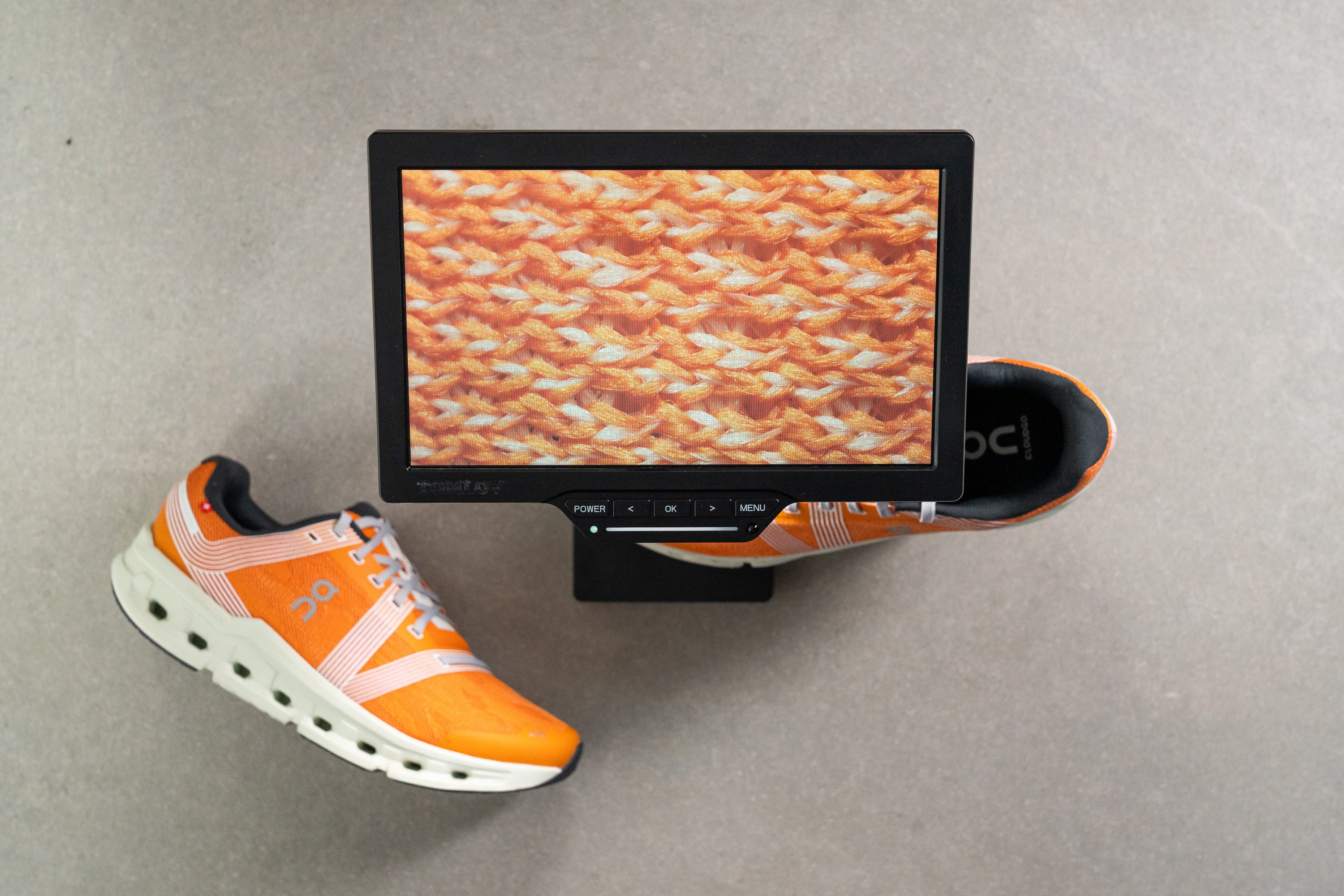

| Cloudgo | 3 |
| Average | 3.7 |
Stability
Lateral stability test
When shifting our weight from side to side in the Cloudgo, we felt some movement in the forefoot but the heel remained well-planted to the ground. This gives us a good amount of stability during our landings while remaining nimble enough for us to take corners efficiently.
Torsional rigidity
The Cloudgo put up a fair amount of resistance as we bent and twisted it in our hands, leading us to give it a score of 3 out of 5 on our subjective scale for torsional rigidity. So while this means that the shoe is able to contort with our natural foot movement to a certain extent, it does prevent excessive rolling and promotes a more neutral stride. This makes the Cloudgo suitable for runners with mildly pronating strides.
| Cloudgo | 3 |
| Average | 3.5 |
Heel counter stiffness
The heel counter didn’t put up as much of a fight against us manipulating it in our hands, but was entirely sloppy. This leads us to give it a score of 2 out of 5 for heel counter stiffness. This makes the shoe feel quite comfortable at the rearfoot as it doesn’t squeeze or restrict our heel too much, while still providing a secure lockdown thanks to the ample padding. We therefore recommend this shoe for runners with stiff or sensitive Achilles’ tendons.
| Cloudgo | 2 |
| Average | 2.9 |
Midsole width - forefoot
We measured the Cloudgo’s midsole to be 111.6 mm wide at the forefoot, which is just shy of our current lab average. This gives us an ample platform to ensure stable landings and toe-offs.
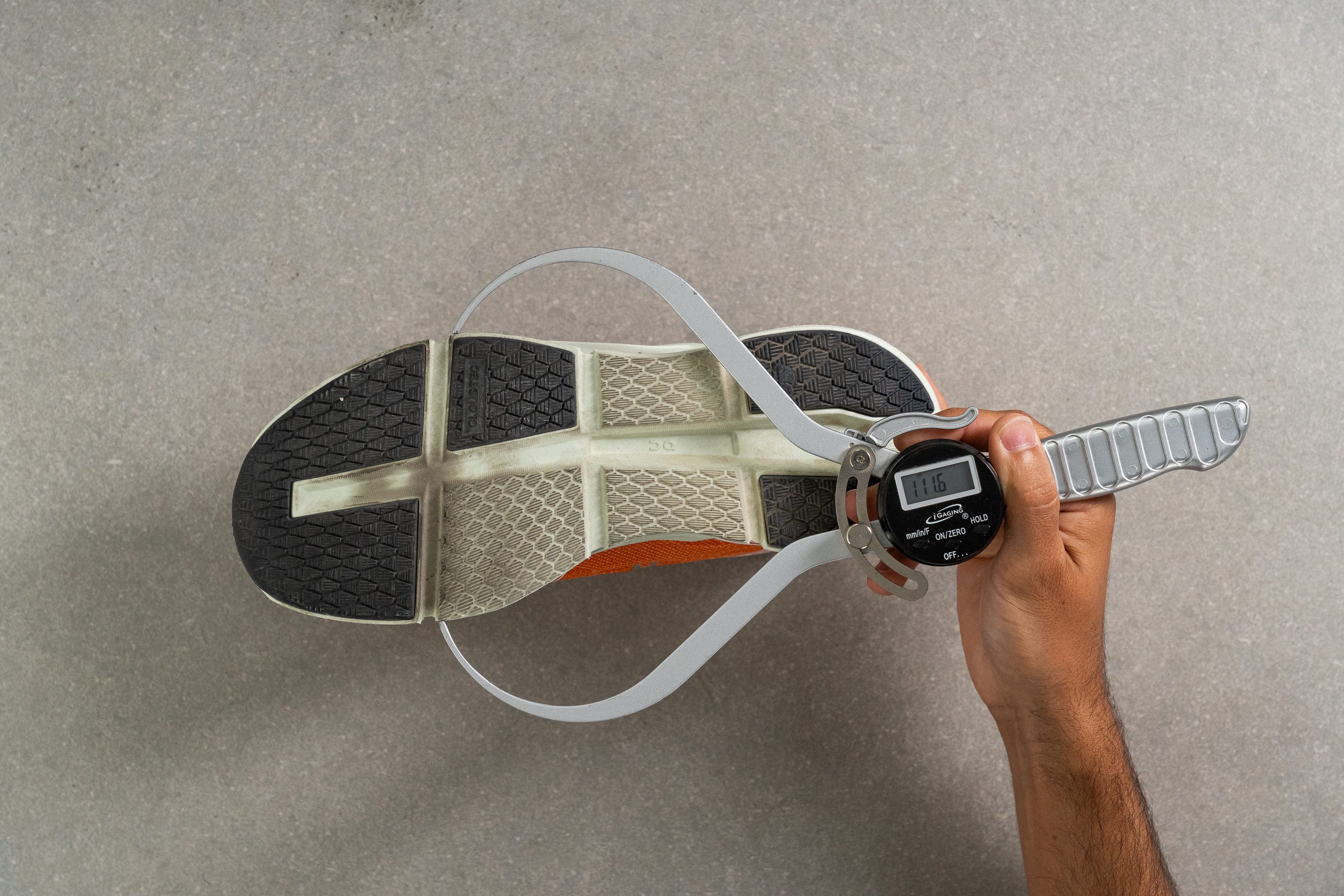
| Cloudgo | 111.6 mm |
| Average | 114.4 mm |
Midsole width - heel
Moving down to the heel, the Cloudgo’s midsole is slightly wider than average at 90.9 mm according to our calliper. This means that heel-strikers will feel especially stable on landings in the Cloudgo without the shoe feeling too blocky underfoot.
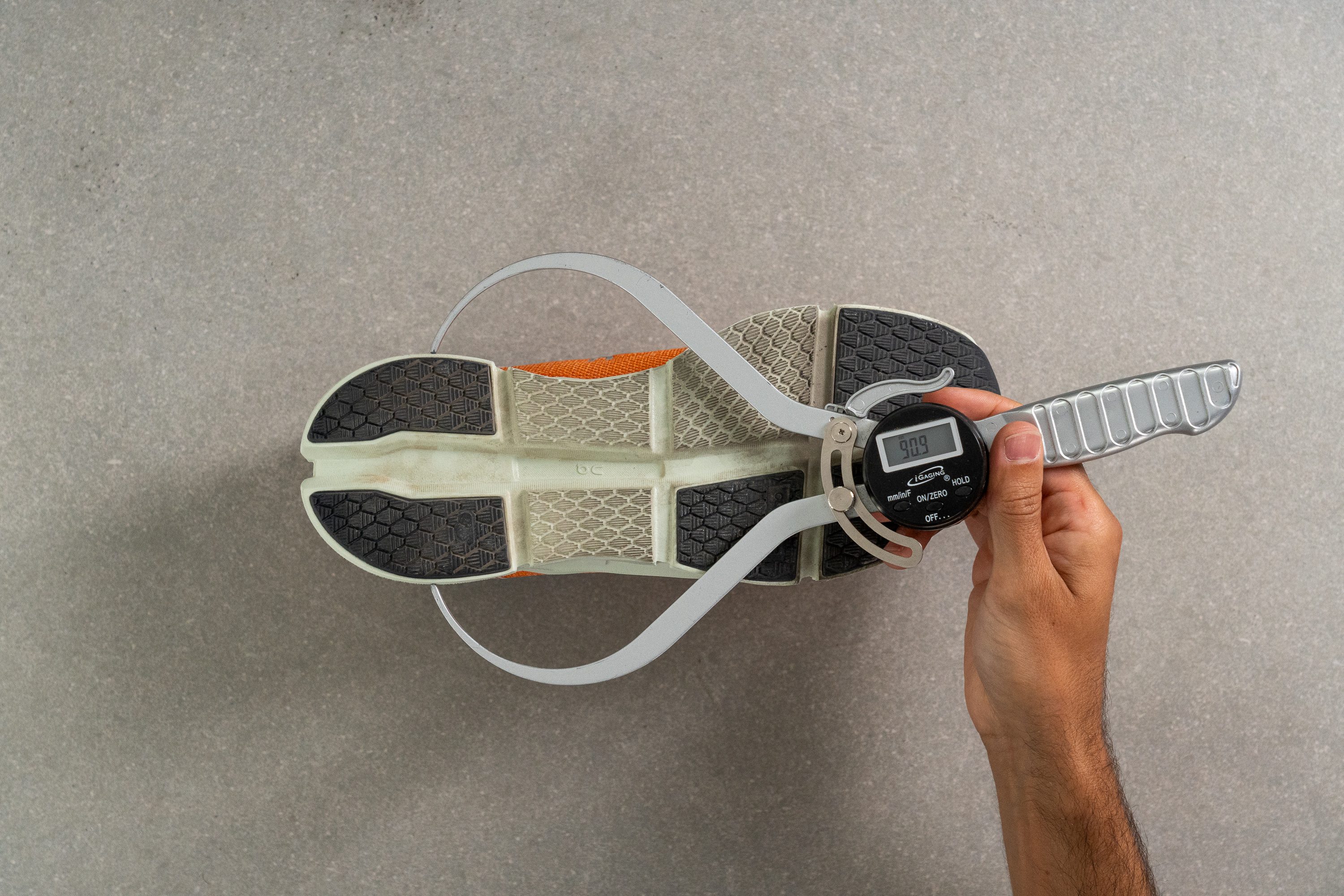
| Cloudgo | 90.9 mm |
| Average | 90.7 mm |
Durability
Toebox durability
The Cloudgo’s toebox might be comfy, but it sure isn’t durable. We tested this by applying our dremel to the shoe at 10K RPM with a force of 3.2N for four seconds. The tool’s grinding element eased its way through the upper material like a hot knife through butter and left a large, gaping hole in its wake once the test was over. This leads us to give the Cloudgo’s toebox a score of 1 out of 5 for durability.

For comparison, look at how the On Cloudswift 3 fared after the same test.
| Cloudgo | 1 |
| Average | 2.6 |
Heel padding durability
The shoe’s heel padding didn’t fare any better against our merciless tool under the same parameters. The dremel immediately shredded through the Cloudgo’s heel counter, sending the copious amount of padding flying through the air; with almost none left once the four seconds were up. We therefore also give the shoe’s heel padding a durability score of 1 out of 5.

Compare the aftermath of the dremel test on the Cloudgo versus the much more durable ASICS Metaspeed Sky+
| Cloudgo | 1 |
| Average | 3.4 |
Outsole hardness
We used our durometer to test the hardness of the Cloudgo’s outsole and got a higher than average reading of 84.0 HC, which theoretically factors into the durability of the outsole.
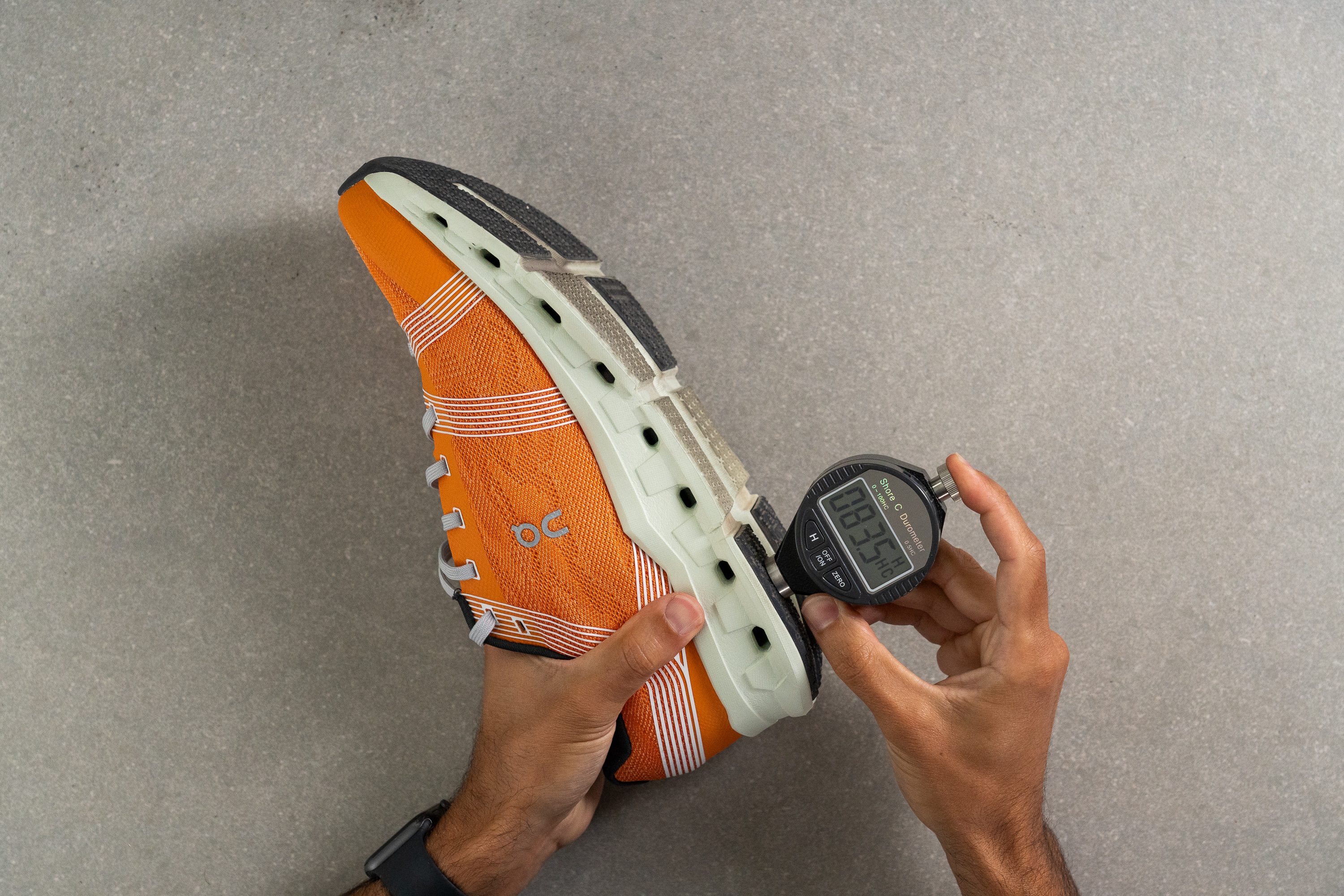
| Cloudgo | 84.0 HC |
| Average | 79.2 HC |
Outsole durability
To confirm this, we simulated extreme wear and tear by again firing up the dremel and pressing it against the outsole for twenty seconds. The result was the loss of only 0.72 mm of rubber from the Cloudgo’s outsole, which is notably less than our current lab average.
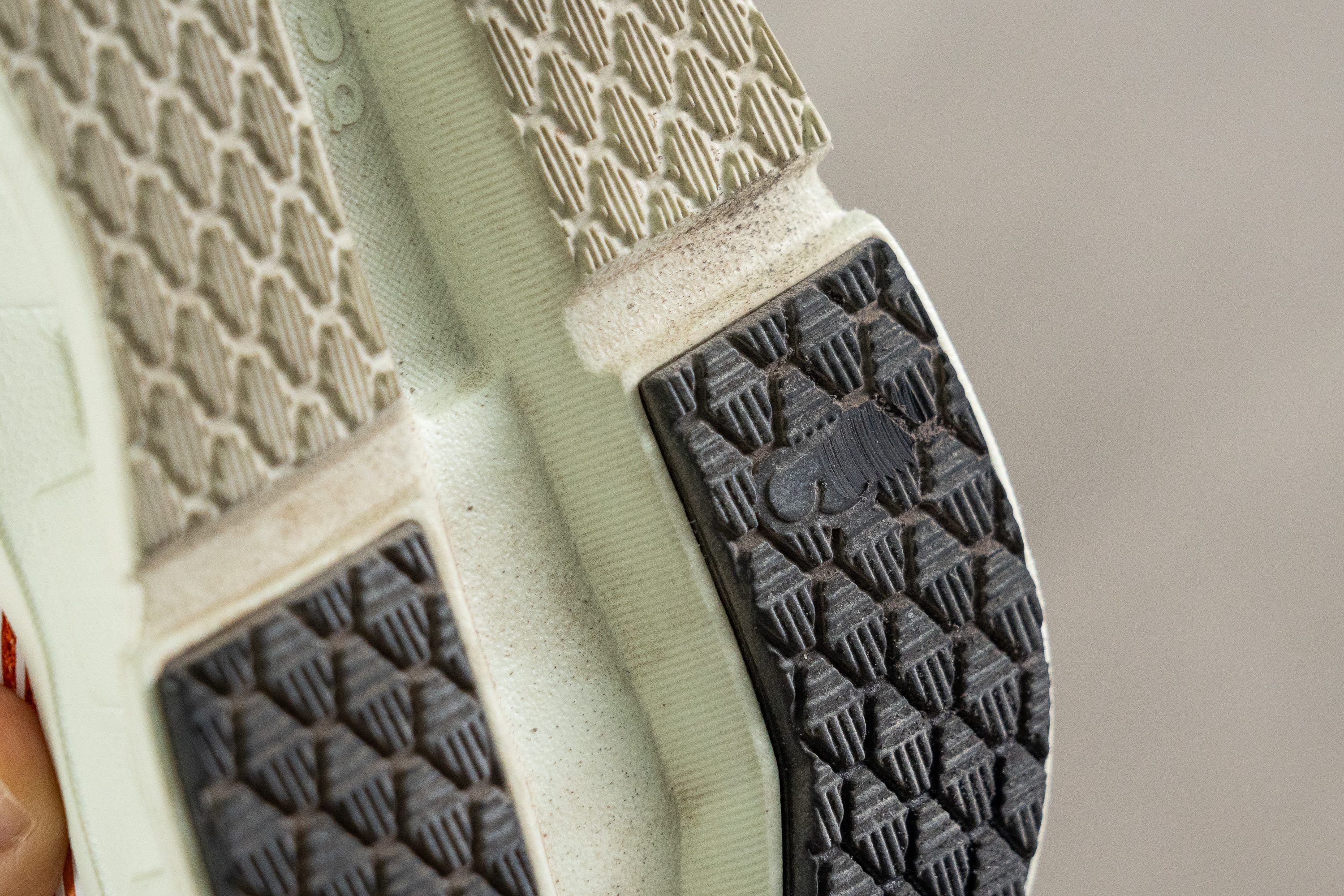
This above average durability allows us to safely predict that the outsole rubber should survive well past 500 miles of normal use, and means that we had no issues taking the Cloudgo for runs on mild trails.
| Cloudgo | 0.7 mm |
| Average | 1.1 mm |
Outsole thickness
Using our caliper, we measured the outsole to be 2.8 mm thick. While this isn’t as thick as the average shoe, there is still plenty of rubber left behind after our dremel test so this doesn’t affect the shoe negatively. By reducing the outsole material, On is able to shave some weight off of what could be a bulky shoe.
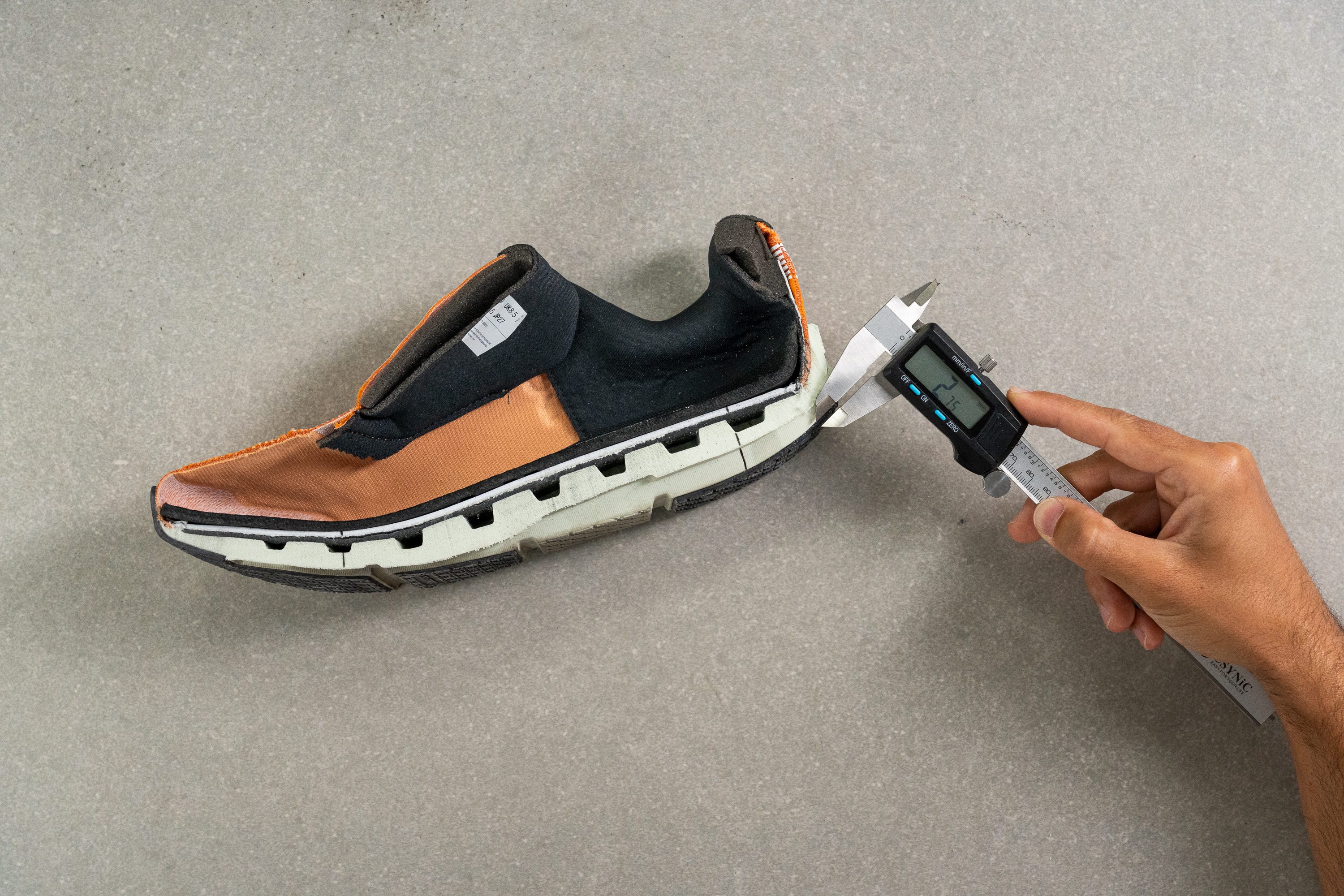
| Cloudgo | 2.8 mm |
| Average | 3.2 mm |
Misc
Insole thickness
The Cloudgo’s insole is ever-so slightly thinner than our lab average, measuring 4.0 mm according to our caliper. Nevertheless, it served its purpose and provided us with enough of a soft landing surface to complement the shoe’s midsole cushioning.
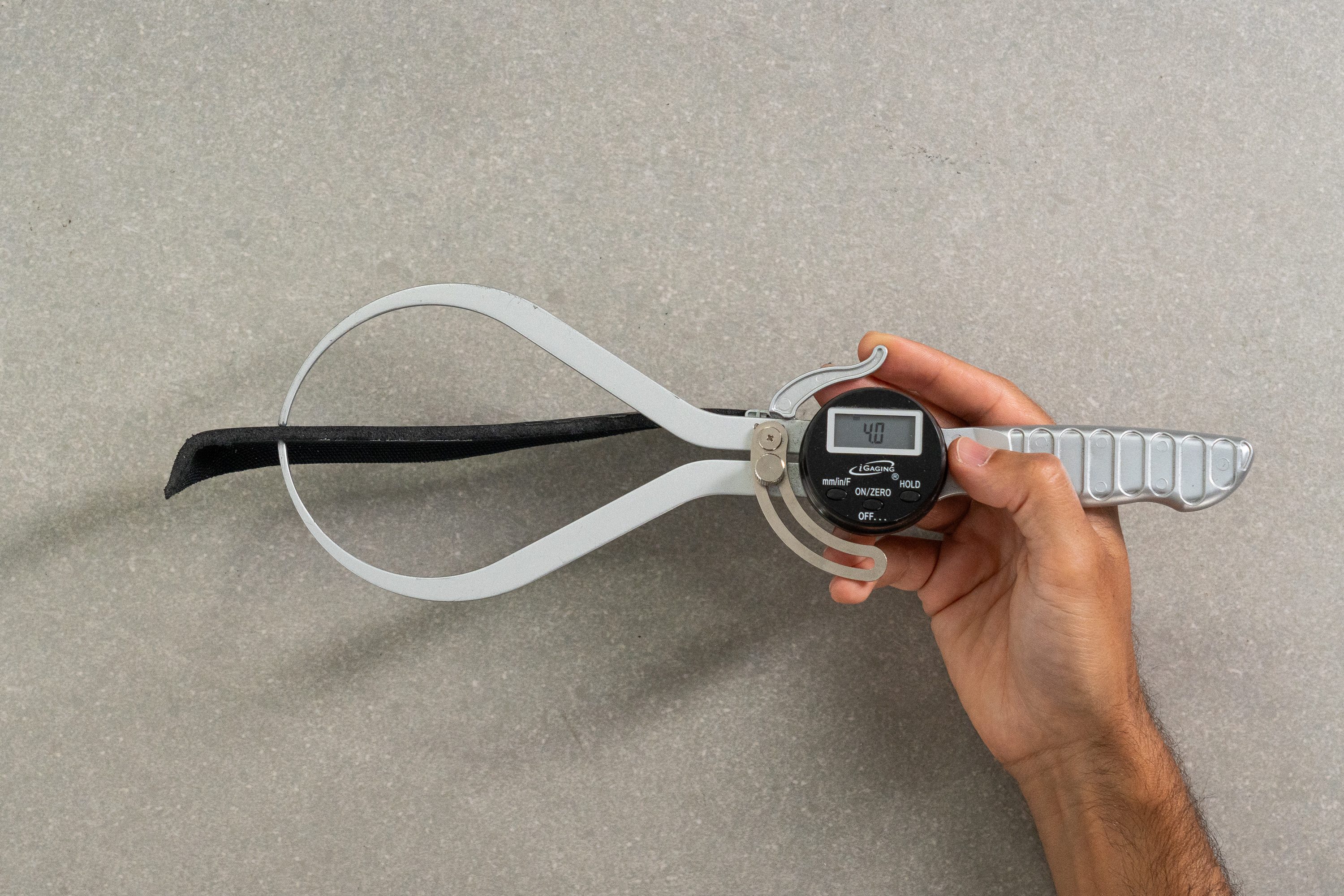
| Cloudgo | 4.0 mm |
| Average | 4.5 mm |
Removable insole
The Cloudgo’s insole is removable which makes the shoe compatible with custom orthotics where necessary.
| Cloudgo | Yes |
Midsole softness in cold (%)
To test the effects of cold weather on the Cloudgo, we re-measured the softness of the midsole after leaving the shoe in the freezer for twenty minutes. With a durometer reading of 34.3 HA after being chilled, the Cloudgo’s midsole is stiffer than the average shoe under similar conditions. This kills whatever cushioning the Cloudgo has to offer and means that the shoe will feel like rigour mortis has set in during winter runs.
The difference in these two durometer readings means that the Cloudgo only gets 21.8% more firm in the cold. This is a much less drastic differential than our current lab average, so in spite of the midsole becoming quite firm, we have to commend the consistency of On’s Helion foam for what it’s worth.
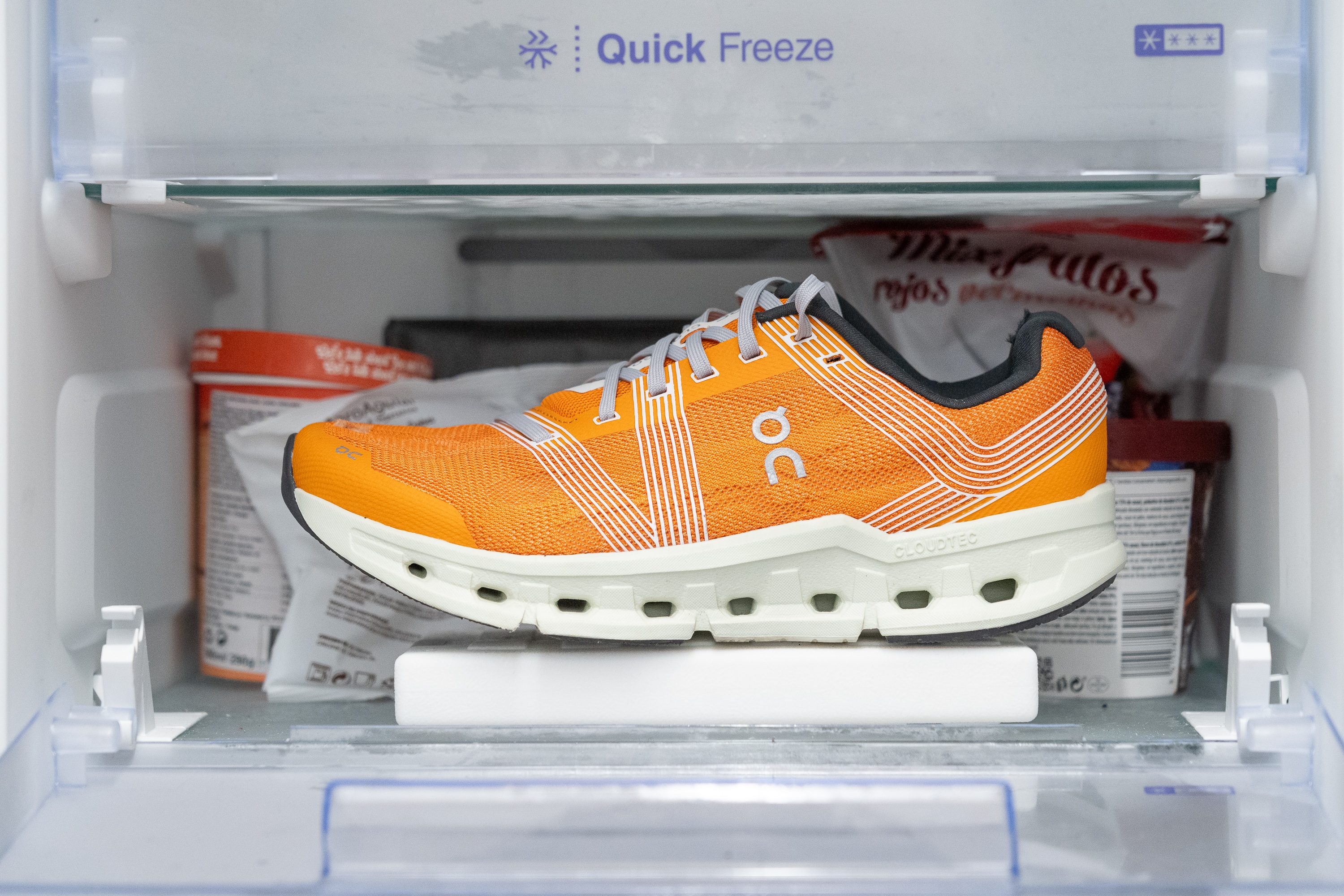
| Cloudgo | 22% |
| Average | 24% |
Reflective elements
The On logo on the side of the shoe is the only reflective element to be found on the Clougo. This might be chic in its minimalism, but does little for visibility in practice. We recommend using reflective clothing when running in badly lit areas at night.

| Cloudgo | Yes |
Tongue padding
Like other On runners, the Cloudgo features a broad and plush tongue that we measured with our caliper to be 9.8 mm thick.This is much meatier than the average tongue and gives us lots of comfort around the instep.

| Cloudgo | 9.8 mm |
| Average | 5.8 mm |
Tongue: gusset type
The Cloudgo’s tongue is not gusseted, but its width and generous padding means that we didn’t experience any slippage during our test runs.
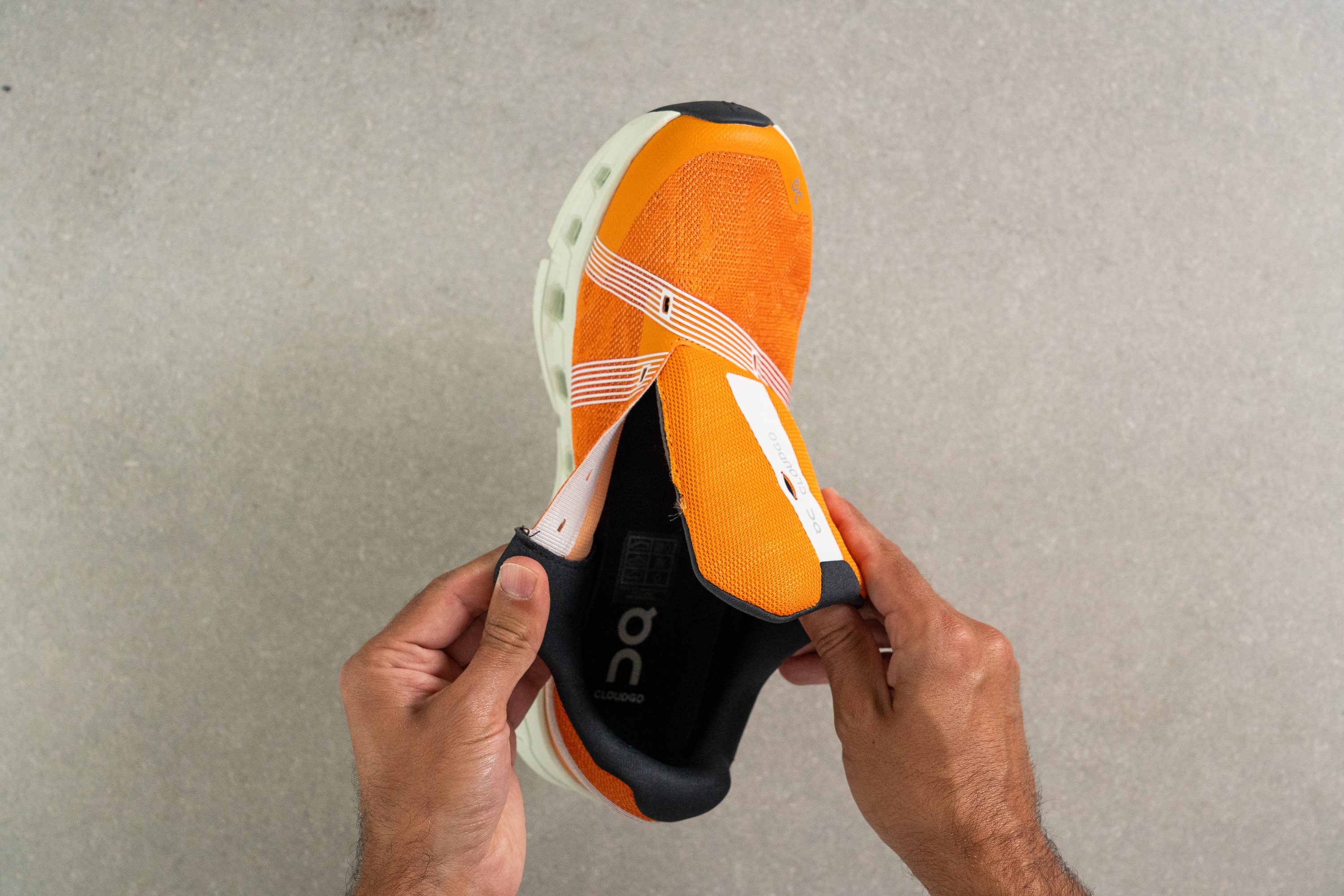
| Cloudgo | None |

